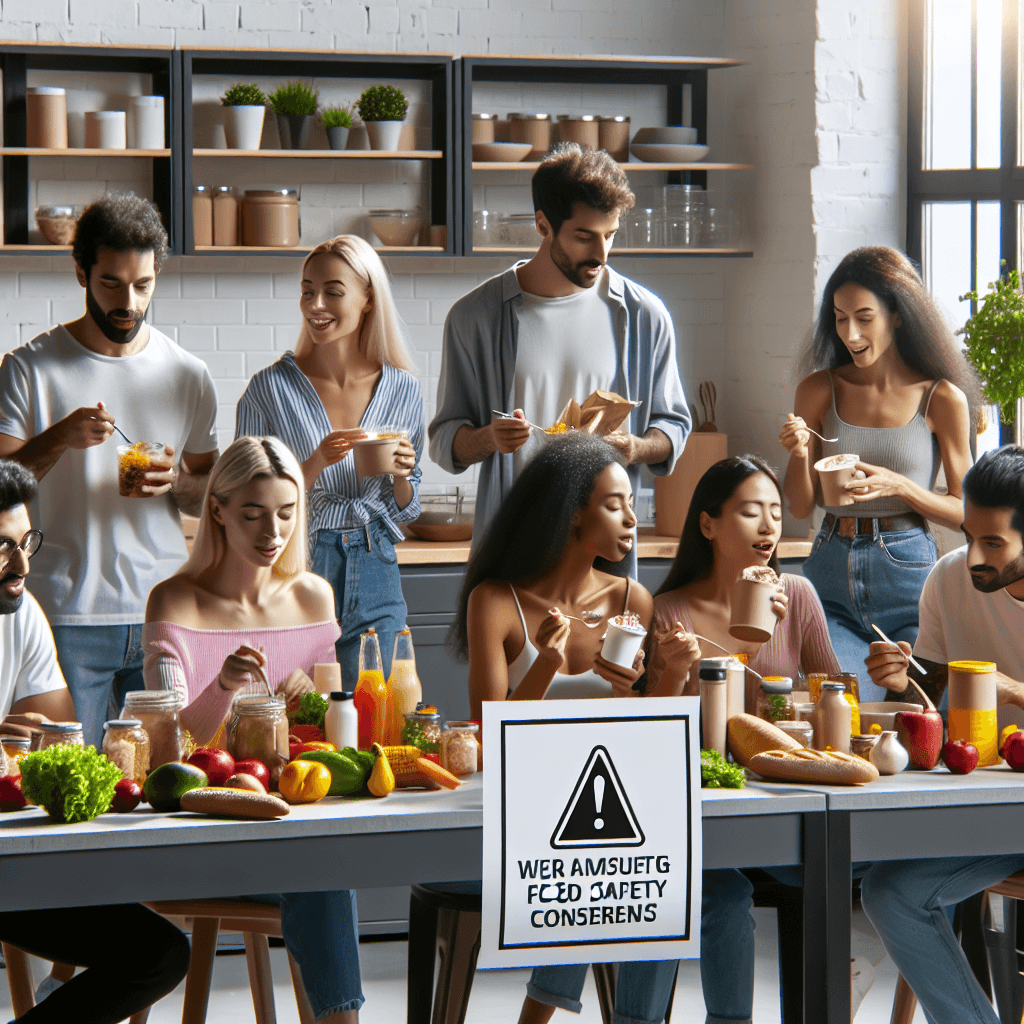Health Halo Foods Eaten by Millions Found to Contain Toxic Lead Linked to Autism, Cancer
Introduction: The Hidden Dangers in “Health Halo” Foods
In a world increasingly focused on wellness, millions of consumers turn to foods marketed as “healthy” or “natural”—often referred to as health halo foods. These are products perceived as better for you due to clever labeling, organic claims, or the absence of artificial ingredients. However, a recent MSN investigation has uncovered alarming evidence: many of these foods are contaminated with toxic lead, a heavy metal linked to autism, cancer, and other serious health conditions.
This article delves into the latest findings, explains the risks for people with food sensitivities and dietary preferences, and offers practical advice on how to protect yourself and your family.
What Are “Health Halo” Foods?
“Health halo” foods are products that appear healthier than they truly are, often due to marketing buzzwords like “organic,” “gluten-free,” “vegan,” “natural,” or “non-GMO.” Examples include:
- Organic fruit snacks and juices
- Plant-based protein bars and powders
- Gluten-free baked goods
- Superfood powders (acai, spirulina, matcha, etc.)
- Natural nut butters and spreads
- Vegan and vegetarian ready meals
These foods are often chosen by people with dietary sensitivities (such as gluten intolerance, nut allergies, or lactose intolerance) and those seeking to improve their health. However, the recent findings suggest that even these “safe” choices may carry hidden risks.
Lead Contamination in Health Halo Foods: What the Latest Research Shows
According to the MSN article published in June 2024, independent laboratory tests have detected elevated levels of lead in a wide range of foods marketed as healthy. These findings are supported by recent peer-reviewed research:
- 2023 JAMA Pediatrics Study: Researchers found that 20% of baby foods and snacks labeled as “organic” or “natural” contained detectable levels of lead, with some exceeding FDA recommended limits.
- 2024 Consumer Reports Investigation: Analysis of popular plant-based protein powders revealed that 30% contained lead, cadmium, or arsenic above safe thresholds.
- 2023 FDA Surveillance Report: The U.S. Food and Drug Administration identified lead contamination in imported spices, herbal teas, and fruit-based snacks, many of which are consumed by health-conscious individuals and those with food allergies.
Key takeaway: Lead contamination is not limited to processed junk food. Even foods marketed as healthy and safe for sensitive diets can harbor dangerous levels of heavy metals.
How Does Lead Get Into Health Halo Foods?
Lead is a naturally occurring element, but its presence in food is almost always due to environmental contamination or poor manufacturing practices. Common sources include:
- Soil contamination: Crops grown in polluted soil can absorb lead, which accumulates in fruits, vegetables, and grains.
- Water contamination: Irrigation with contaminated water can introduce lead into otherwise healthy produce.
- Processing equipment: Old or poorly maintained machinery can leach lead into foods during production.
- Imported ingredients: Spices, teas, and superfood powders from countries with lax regulations are particularly at risk.
- Packaging: Some food packaging materials, especially from overseas, may contain lead-based inks or glazes.
Foods that are minimally processed, such as dried fruits, nuts, and whole grains, are not immune. In fact, their “natural” status may mean less oversight and testing for contaminants.
Health Risks: Lead Exposure, Autism, and Cancer
Lead is a potent neurotoxin. Even low levels of exposure can cause serious health problems, especially for children, pregnant women, and those with compromised immune systems. According to the Centers for Disease Control and Prevention (CDC), there is no safe level of lead in the blood.
Autism Spectrum Disorders
Recent research, including a 2023 study published in Environmental Health Perspectives, has linked prenatal and early childhood lead exposure to an increased risk of autism spectrum disorders (ASD). The study found that children with higher blood lead levels were significantly more likely to be diagnosed with ASD, with risk increasing as exposure levels rose.
Cancer and Other Chronic Diseases
Chronic lead exposure is associated with a higher risk of several cancers, including kidney, brain, and lung cancer. Lead also contributes to cardiovascular disease, kidney damage, and reproductive issues. The International Agency for Research on Cancer (IARC) classifies lead compounds as “probably carcinogenic to humans.”
Food Sensitivities and Vulnerable Populations
People with food allergies, celiac disease, or other dietary sensitivities often rely on “health halo” foods as safe alternatives. Unfortunately, these groups may be at higher risk if they consume contaminated products regularly. Children, in particular, are more vulnerable to the neurotoxic effects of lead.
Which Health Halo Foods Are Most at Risk?
Based on the latest research and the MSN report, the following categories of health halo foods are most likely to contain lead:
- Plant-based protein powders: Especially those containing rice, pea, or hemp protein.
- Imported spices and herbal teas: Turmeric, cinnamon, ginger, and matcha are frequently cited.
- Dried fruits and fruit snacks: Especially those sourced from countries with less stringent regulations.
- Superfood powders: Acai, spirulina, chlorella, and maca root.
- Gluten-free flours and baked goods: Rice flour and products made from it are particularly susceptible.
- Organic baby foods and snacks: Even those labeled as “lead-free” have tested positive in some cases.
Note: The risk is not limited to these foods. Any product made from plants grown in contaminated soil or processed with poor quality controls can be affected.
Protecting Yourself: How to Avoid Lead in Health Halo Foods
While it’s impossible to eliminate all risk, there are steps you can take to minimize your exposure to lead in foods:
- Check for independent testing: Look for brands that regularly test their products for heavy metals and publish the results.
- Buy from reputable sources: Choose products from companies with transparent supply chains and strong quality controls.
- Limit imported products: Especially spices, teas, and superfoods from countries with less strict regulations.
- Rotate your diet: Avoid consuming large amounts of any one food, especially those at higher risk for contamination.
- Use food scanning apps: Apps like Food Scan Genius and Yuka can help you identify products with potential contamination or poor safety ratings.
- Wash and peel produce: This can help reduce surface contamination on fruits and vegetables.
- Stay informed: Follow food safety alerts from the FDA, CDC, and consumer advocacy groups.
How Food Scan Genius and Yuka Can Help
In the digital age, consumers have powerful tools to help them make safer food choices. Food Scan Genius and Yuka are two leading apps that scan product barcodes and provide detailed safety information, including:
- Ingredient analysis (including additives and allergens)
- Heavy metal and contaminant alerts (when available)
- Brand transparency and safety ratings
- Alternative product suggestions
While no app can guarantee a product is 100% free from contaminants, using these tools can help you avoid products with a history of recalls or poor testing results. For people with food sensitivities, these apps can be invaluable for quickly checking if a product meets their dietary and safety needs.
What Should People with Food Sensitivities and Dietary Preferences Do?
If you or your family members have food allergies, celiac disease, or other sensitivities, it’s essential to be proactive:
- Consult your healthcare provider: If you are concerned about lead exposure, ask about blood testing, especially for children.
- Choose certified products: Look for third-party certifications such as USDA Organic, Non-GMO Project Verified, and NSF Certified for Sport, which may indicate higher safety standards.
- Read labels carefully:</strong





